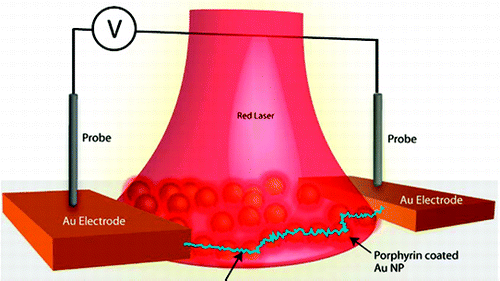
Dawn Bonnell, a professor of materials science, and his colleagues have recently unveiled a method to transform optical radiation into electrical current that could lead to self-powering molecular circuits and efficient data storage. For the research, light-sensitive gold nanoparticles were placed on a glass substrate, minimizing the distance between the nanoparticles. After this, conductive electrons with optical radiation were stimulated to ride the surface of the gold nanoparticles, which resulted into something known as “surface plasmons.” Surface plasmons are responsible for inducing electrical current across molecules.
It was found that under these conditions, surface plasmons increased the efficiency of current production by a factor of 4 to 20. The researchers believe that optimization of parameters like size, shape and separation of the array of golden nanoparticles, which can be customized independently of the optical characteristics of the molecule, could produce enhancement factors of thousands. Meaning that the resulting electrical current could be easily transported to the outside world.
The study that is supported by the Nano/Bio Interface Center, National Science Foundation, the John and Maureen Hendricks Energy Fellowship and the US Department of Energy suggested that better nano-sized circuits that can power themselves, potentially through sunlight can be easily produced. The team also said that it could also be used for data storage, where a photovoltaic circuit could encode bits using wavelengths of light rather than electrical charge.
Via: Gizmag

